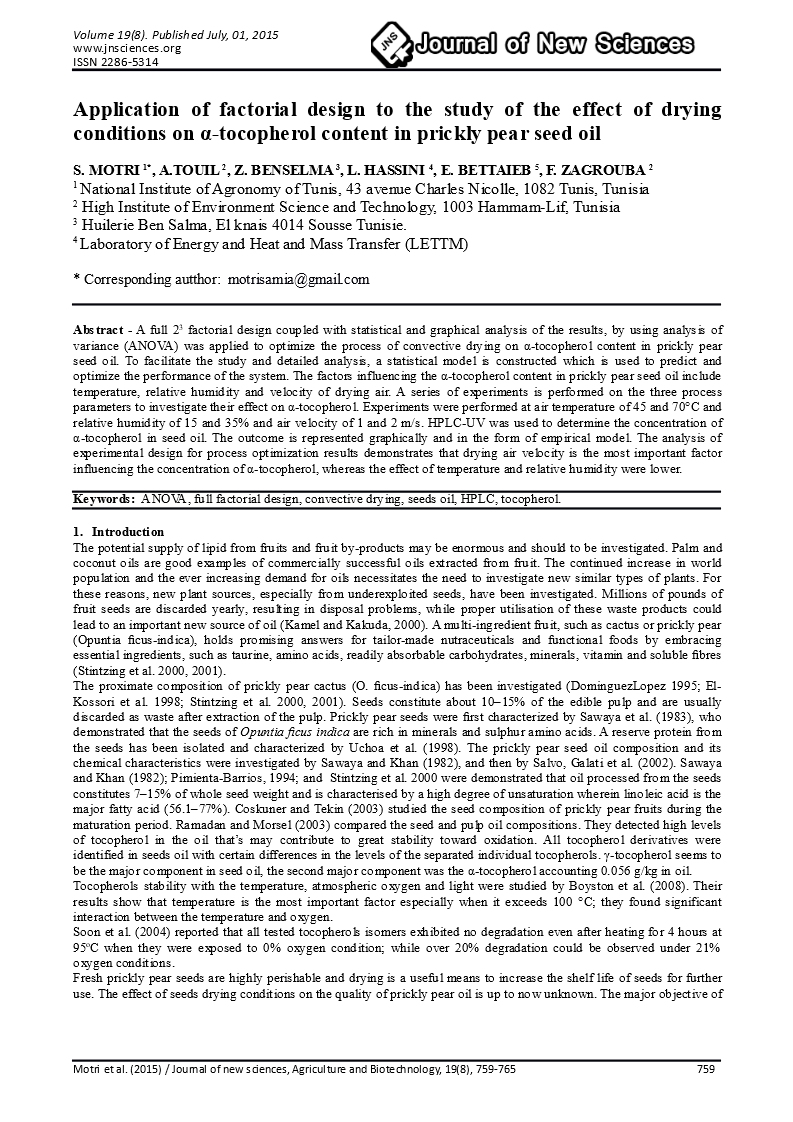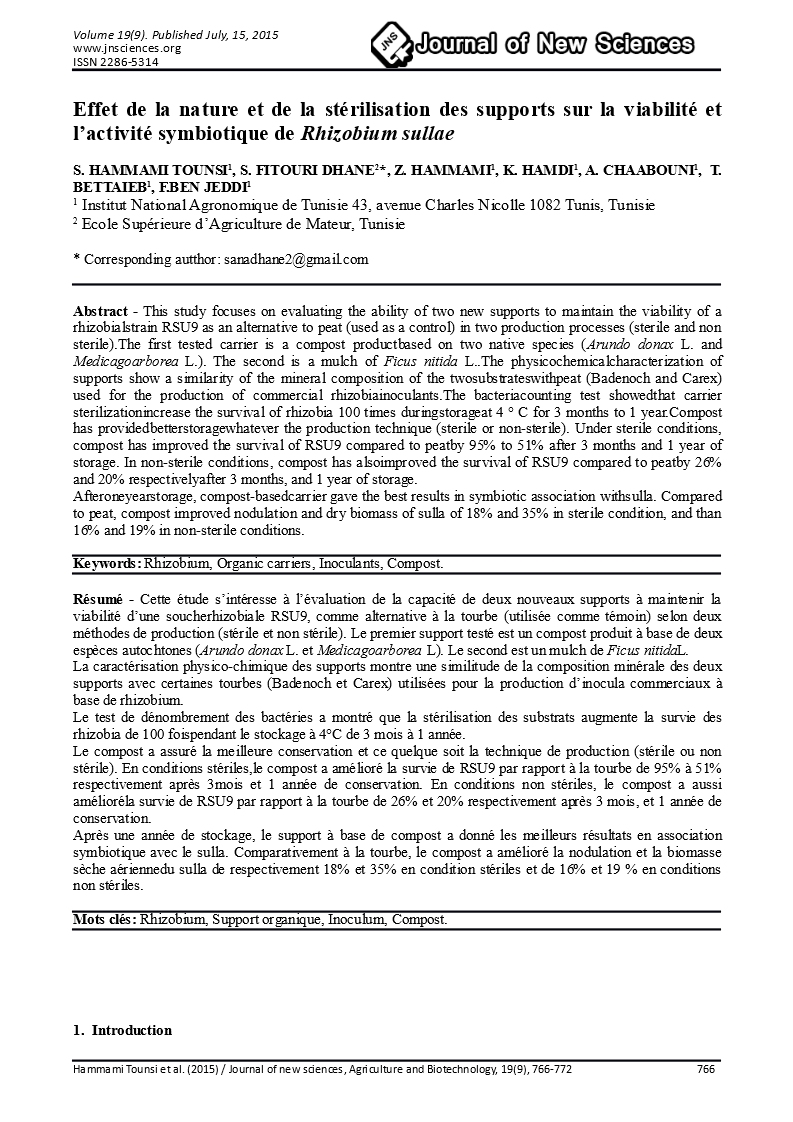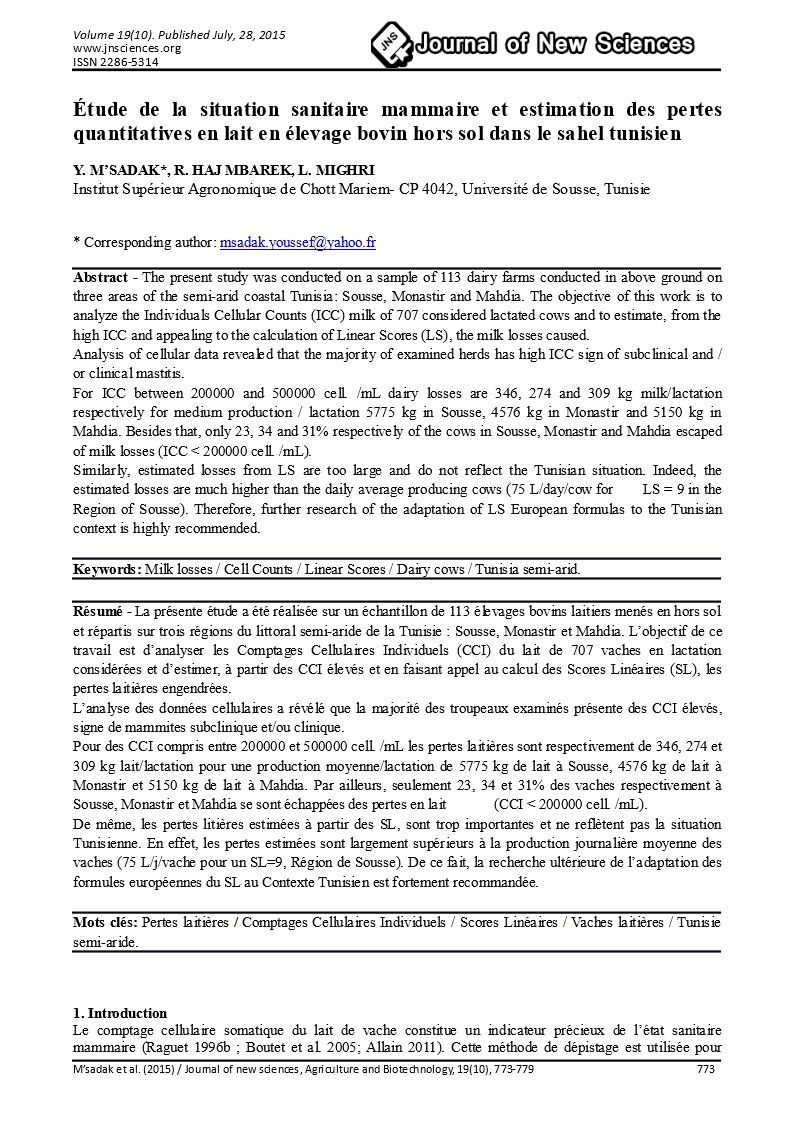- Category: Volume 19
- Hits: 10110
Application of factorial design to the study of the effect of drying conditions on α-tocopherol content in prickly pear seed oil

S. MOTRI 1*
A.TOUIL 2
Z. BENSELMA 3
L. HASSINI 4
E. BETTAIEB 5
F. ZAGROUBA 2
1 National Institute of Agronomy of Tunis, 43 avenue Charles Nicolle, 1082 Tunis, Tunisia
2 High Institute of Environment Science and Technology, 1003 Hammam-Lif, Tunisia
3 Huilerie Ben Salma, El knais 4014 Sousse Tunisie.
4 Laboratory of Energy and Heat and Mass Transfer (LETTM)
Abstract - A full 23 factorial design coupled with statistical and graphical analysis of the results, by using analysis of variance (ANOVA) was applied to optimize the process of convective drying on α-tocopherol content in prickly pear seed oil. To facilitate the study and detailed analysis, a statistical model is constructed which is used to predict and optimize the performance of the system. The factors influencing the α-tocopherol content in prickly pear seed oil include temperature, relative humidity and velocity of drying air. A series of experiments is performed on the three process parameters to investigate their effect on α-tocopherol. Experiments were performed at air temperature of 45 and 70°C and relative humidity of 15 and 35% and air velocity of 1 and 2 m/s. HPLC-UV was used to determine the concentration of α-tocopherol in seed oil. The outcome is represented graphically and in the form of empirical model. The analysis of experimental design for process optimization results demonstrates that drying air velocity is the most important factor influencing the concentration of α-tocopherol, whereas the effect of temperature and relative humidity were lower.
Keywords: ANOVA, full factorial design, convective drying, seeds oil, HPLC, tocopherol.


